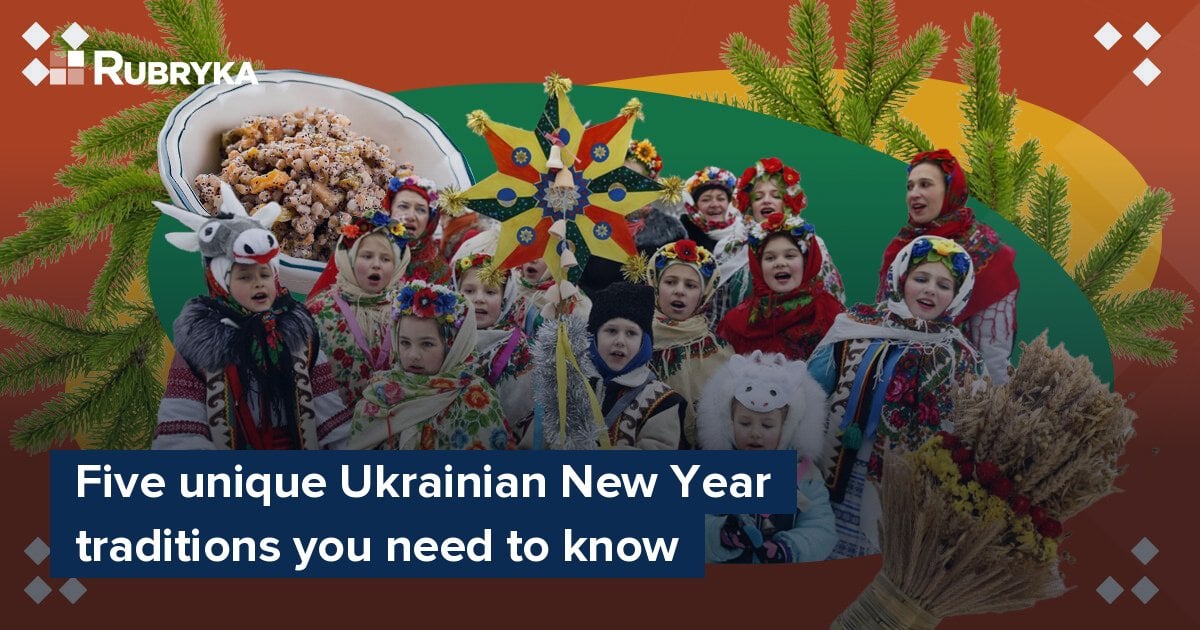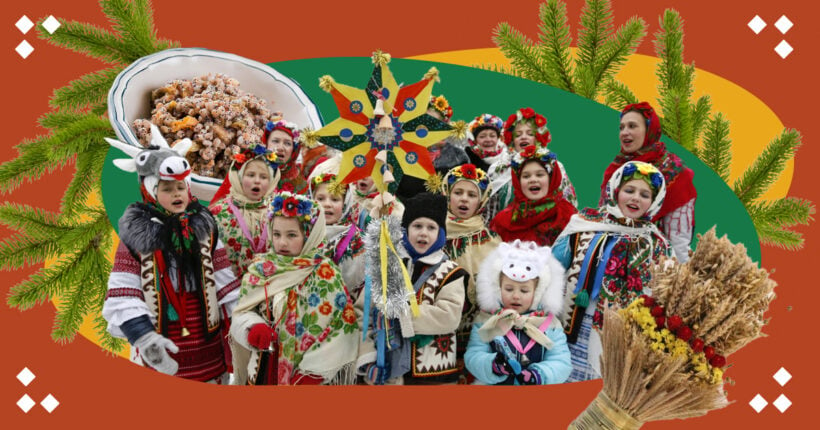
People worldwide usually associate the New Year celebration with big, loud parties, a lot of drinking, and counting down the last seconds of the year that is leaving us. For many years, the same has been true for Ukrainians, especially young people, who accepted this modern custom.
However, Ukrainians, as a nation that has never lost its connection to the past and has always tried and fought to preserve its ancient culture, still celebrate their uniquely Ukrainian New Year traditions.
Rubryka will give you a lovely introduction to the fun and unusual Ukrainian New Year's Eve and New Year's Day. Something tells us that you've never seen anything like it.
1. Malanka — Ukrainian New Year's Eve
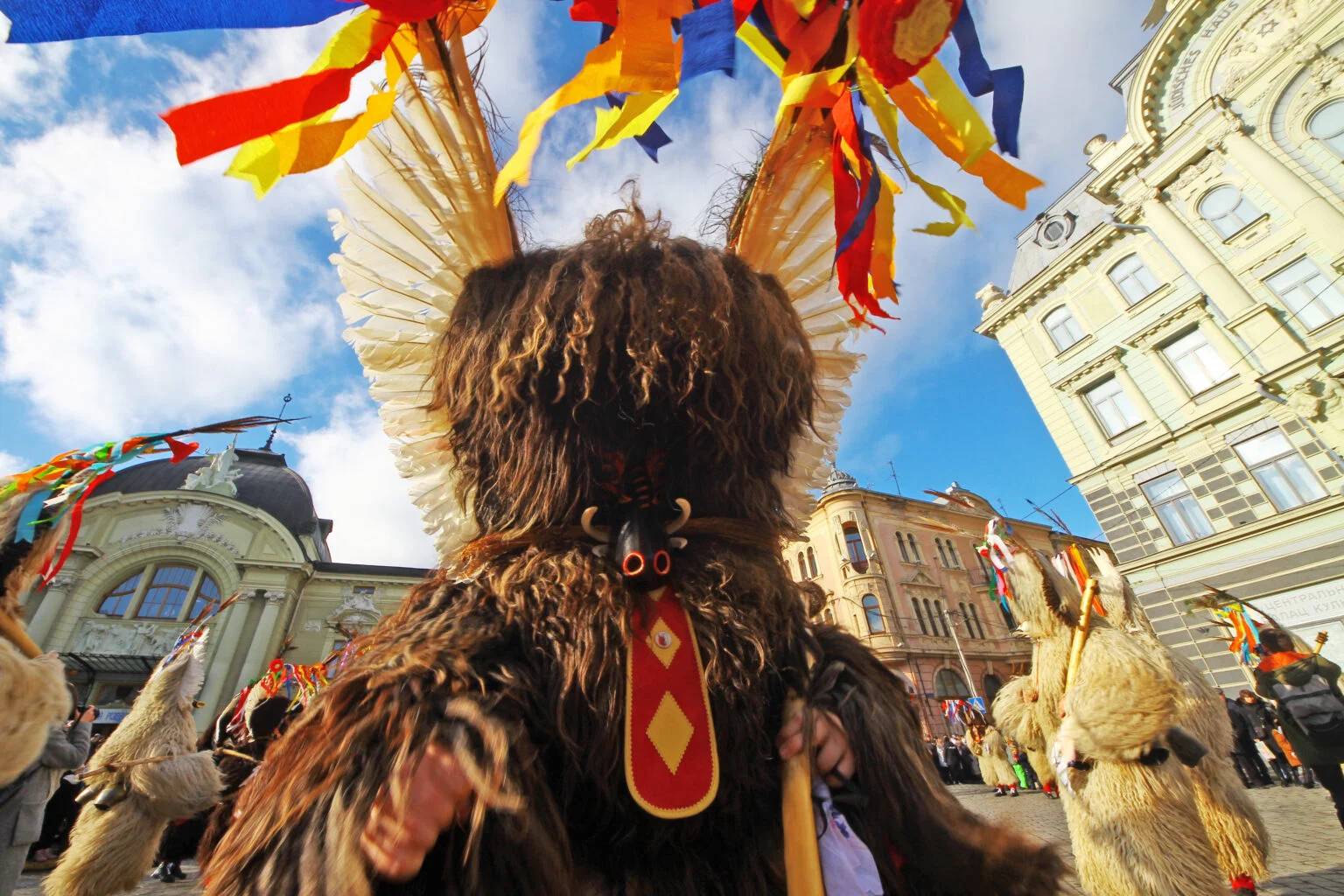
Ukrainian New Year traditions: The Ukrainian city of Chernivtsi hosts the festival of Malanka. Photo: Shutterstock
For generations, Ukrainians believed that the way one celebrated the New Year shaped the destiny of the entire year ahead, and good fortune for the family was to have wealth — rich harvest and cattle — and happiness — health, good marriage, and kids.
Even though Ukrainians became Christians, they have never lost this profound connection to nature and pagan customs. Ukrainian New Year's Eve, also called the Generous Evening or Malanka, which didn't change much under the influence of the new religion, is the proof.
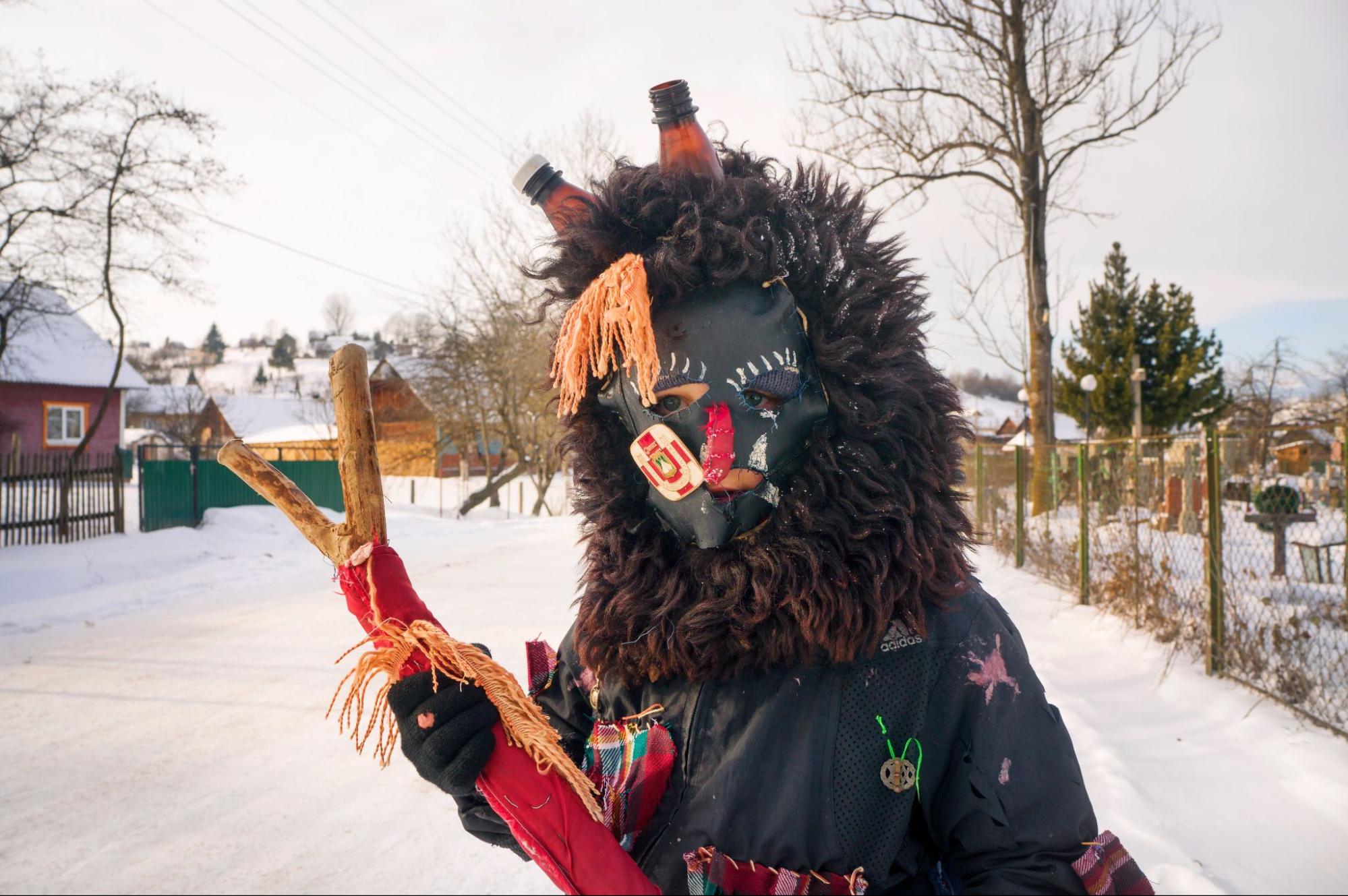
Ukrainian New Year's Eve: Ukrainian folk tradition of dressing up. Photo: Depositphotos
An old legend says Malanka was the daughter of the moon, said to bring renewal to the people in the new year. Her figure is honored by one of the most unique Ukrainian New Year traditions, celebrated on December 31 — a lively dress-up ritual, also known as Malanka.
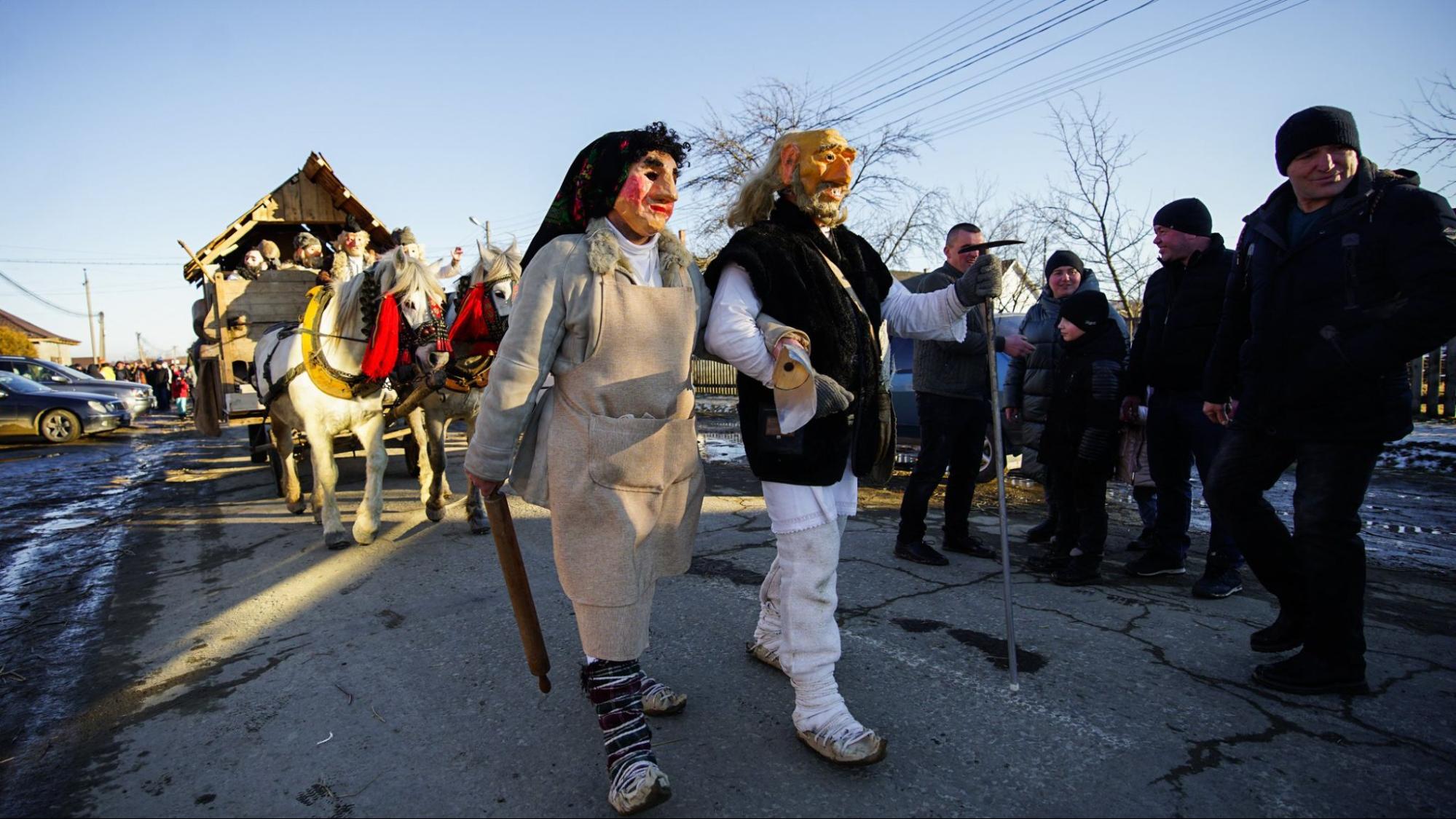
Ukrainian New Year traditions: The characters of the grandfather and grandmother walk through the village during the Malanka festival. Photo: Yelizaveta Servatynska / Suspilne
On New Year's Eve, young people and children dress up in hand-made costumes and masks of animals, like goats, bears, and storks, and folklore characters, like "chort" or the Ukrainian devil. At least one person in the group must dress up as Malanka, which often had her face smeared with soot. Others can transform into grandfathers or grandmothers. In recent years, dressing up as modern characters and even political figures has also become customary.
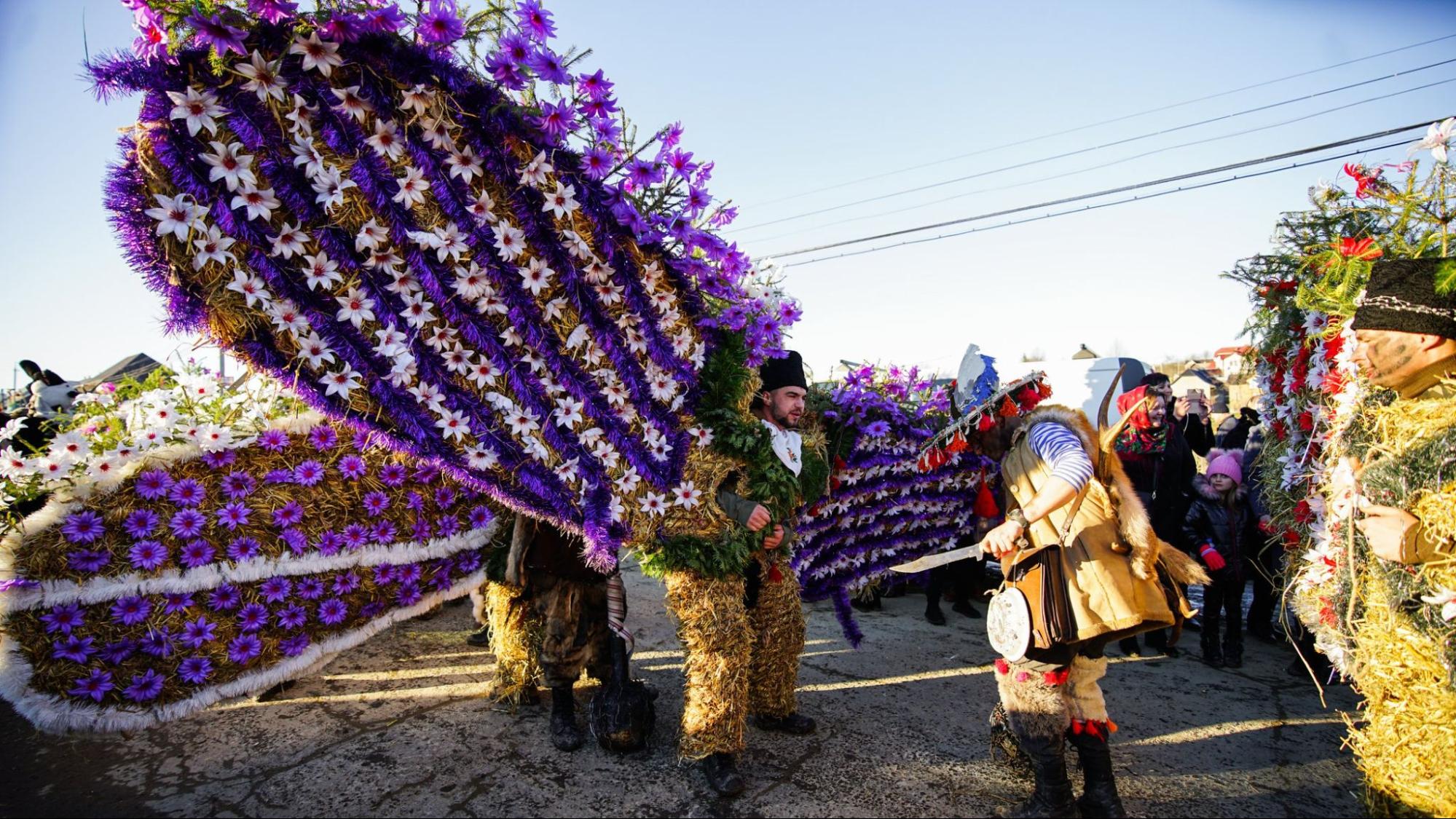
Ukrainian New Year traditions: Malanka participants wear bear costumes with wings. Photo: Yelizaveta Servatynska / Suspilne
In the past, festive dress-ups served magical functions — to bring good luck, ward off evil, and ensure prosperity for the year to come. Over time, this custom evolved into a masquerade, which can be seen in its authentic preserved form, mainly in the villages of the southwestern, central, and western parts of Ukraine.
2. Ukrainian New Year's Eve caroling
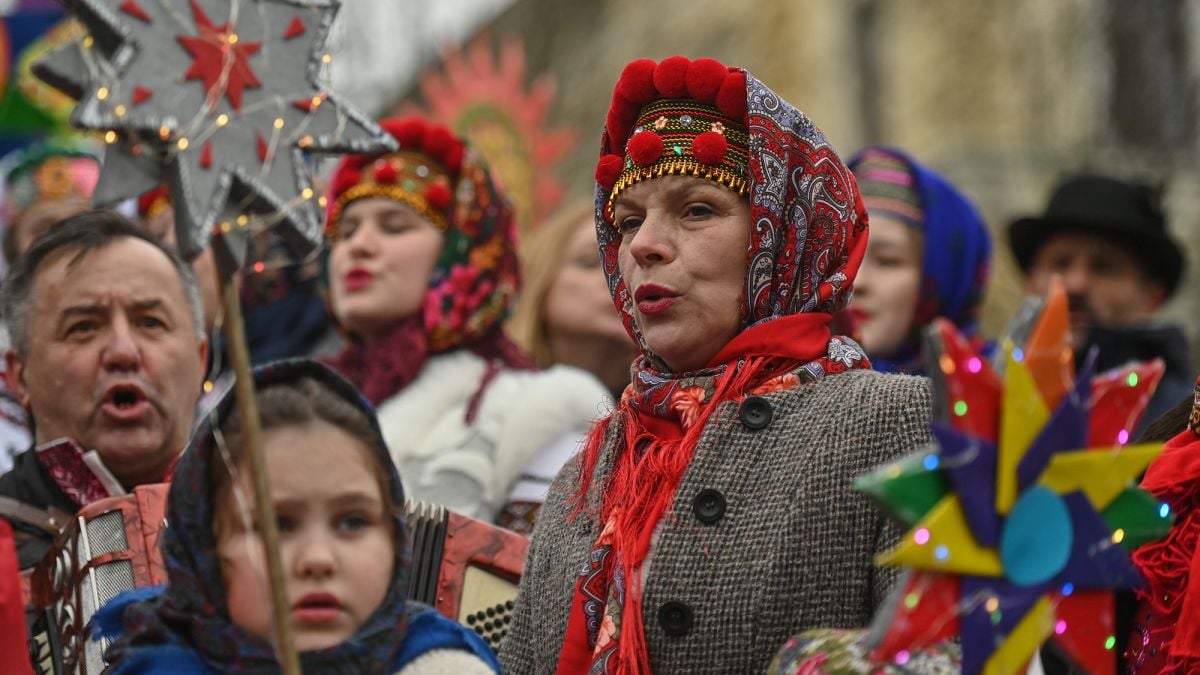
Ukrainian New Year traditions: Ukrainians carol the entire winter festive season, called sviatky. Photo: Getty Images
Caroling doesn't just stop on Christmas Day but accompanies Ukrainian people throughout the entire winter festive season. On Ukrainian New Year's Eve or the Generous Evening, carolers perform special carols called shchedrivky. Their name originates from the word "shchedryi," which means "generous" or "wealthy."
According to Ukrainian New Year tradition, carolers go from house to house, performing shchedrivky to bless the hosts and wish them health, happiness, and success, and in return, hosts reward them with treats or small gifts. Songs often feature the images of swallows or cuckoos, Ukrainian folklore symbols of kindness, renewal, and happiness, and call for abundance — a rich harvest of healthy livestock. The Generous Carols were believed to hold a magical power, bringing wealth and good fortune to the following year.
Ukraine's most famous shchedrivka is Shchedryk, which you probably know as the Carol of the Bells, an international Christmas classic. The carol tells the story of a little swallow that comes to a Ukrainian home and announces that the new year will be prosperous. Every year, you hear it playing from every corner in an iconic arrangement of Ukrainian composer Mykola Leontovych.
Listen to Shchedryk and other popular Ukrainian Christmas and New Year music in our playlist here.
3. Leading the Goat
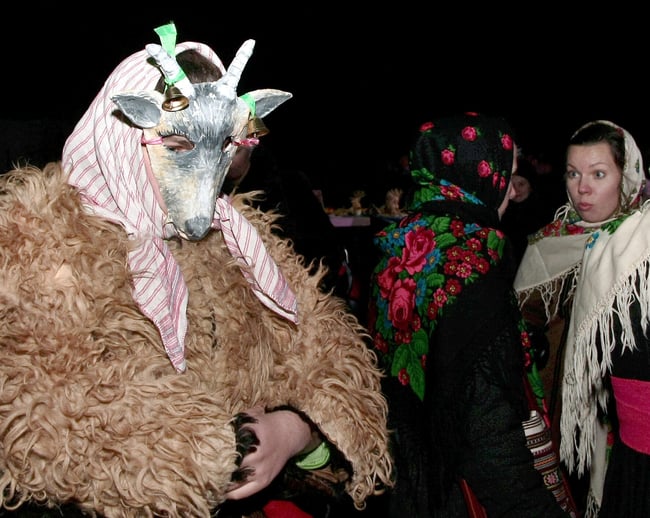
Ukrainian New Year's Eve: One of the carolers is dressed as a goat for the special ritual. Photo: Ruslana Kaniuka
Although this mystical Ukrainian New Year tradition has changed over the years and developed some regional differences across Ukraine, it still preserves many old pagan attributes. The Leading the Goat ritual, sometimes called the Goat Dance, was believed to awaken nature's forces during the winter solstice and promise the coming of spring.
On New Year's Eve, a group of young carolers carrying a symbolic star would go from house to house, sing shchedrivky to a host, and "lead the goat." The goat's role was usually played by a young boy or man wearing a mask and horns dressed in a turned-out fur coat, which represents a connection to the otherworld, where everything is reversed.
The ritual starts with carolers greeting the hosts, singing festive songs, and performing funny skits — all believed to cast a spell for a rich harvest in the year ahead. Then, the goat takes center stage, bursting into a playful dance. After a time, the goat "collapses" dramatically and "dies," so the carolers mourn its "death." But soon, the goat is "brought back to life," which symbolizes the arrival of the New Year and the awakening of nature.
4. Divination
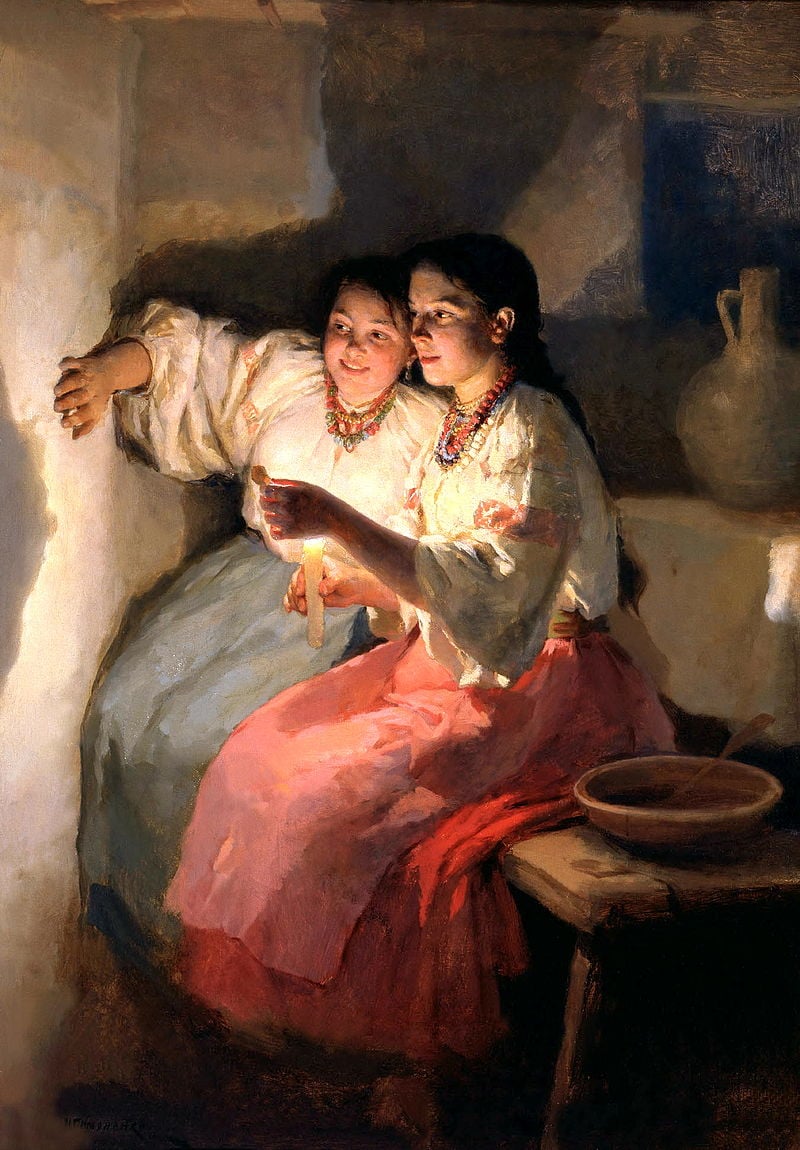
Ukrainian New Year traditions: Ukrainian artist Mykola Pymonenko portrayed the tradition of divination in his 1888 artwork, Christmas Divination. Photo: WikiCommons
Ukrainians always believed in the power and magic of the New Year and the fortune it could bring, so they followed many fascinating rules or superstitions to ensure that the following year would be lucky and happy. They also listened to nature, observed its little signs, and practiced different rituals to get a glimpse into how the future year would be for them.
New Year's Eve was a time to make amends. The entire family, traditionally dressed in crispy clean clothes, asked for forgiveness from one another and neighbors so they could welcome the New Year in peace and harmony. The tradition of settling arguments before the next year comes is still widespread in Ukraine.
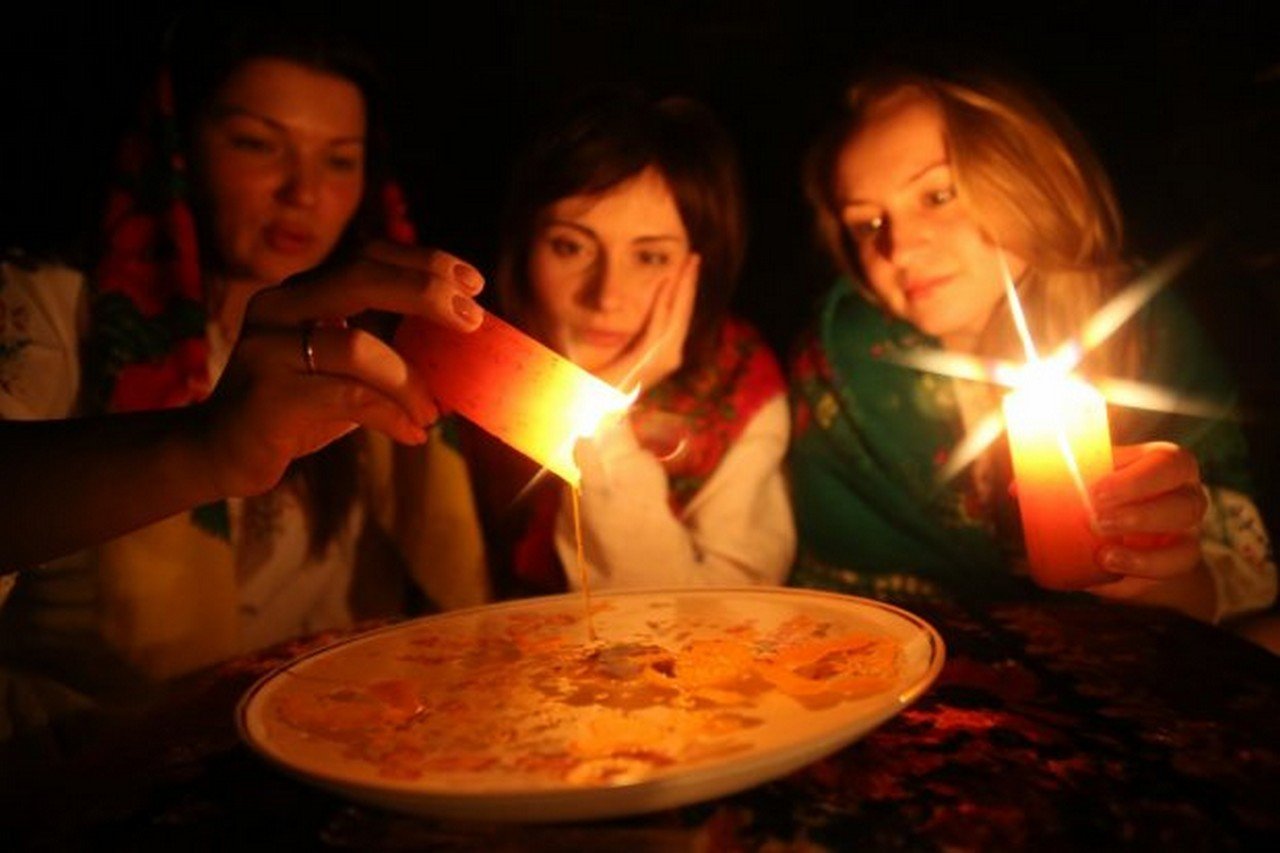
Ukrainian New Year traditions: Divination is traditionally practiced during major celebrations in Ukraine. Photo: Apostrophe
But Ukrainian New Year's Eve was the most fun for the young women and girls, for whom it was a night of divination. Fortune-telling, which young Ukrainian women still engage in to honor the beliefs of their ancestors, was always a significant part of festivities in Ukraine, be that during the Christmas and New Year winter season, autumn celebrations of St. Catherine and St. Andrew, or the fun traditions of Ukrainian Midsummer.
Some divination customs may seem quirky to modern people, but that doesn't make them any less fascinating. In the past, some young women stepped outside, believing the first animal they saw would reveal their future husband's personality — a dog means a rough partner and a tough life, while a sheep promises a gentle and calm spouse.
Some girls hid a comb under their pillow, murmuring, "Beloved, come brush my hair," hoping to dream of their future husband. Girls also fed dumplings to a cat or a dog to predict which of them would marry first, ran beneath windows to eavesdrop on conversations, and asked passing men their names to learn the names of their future husbands.
5. Saint Basil Day — Ukrainian New Year's Day
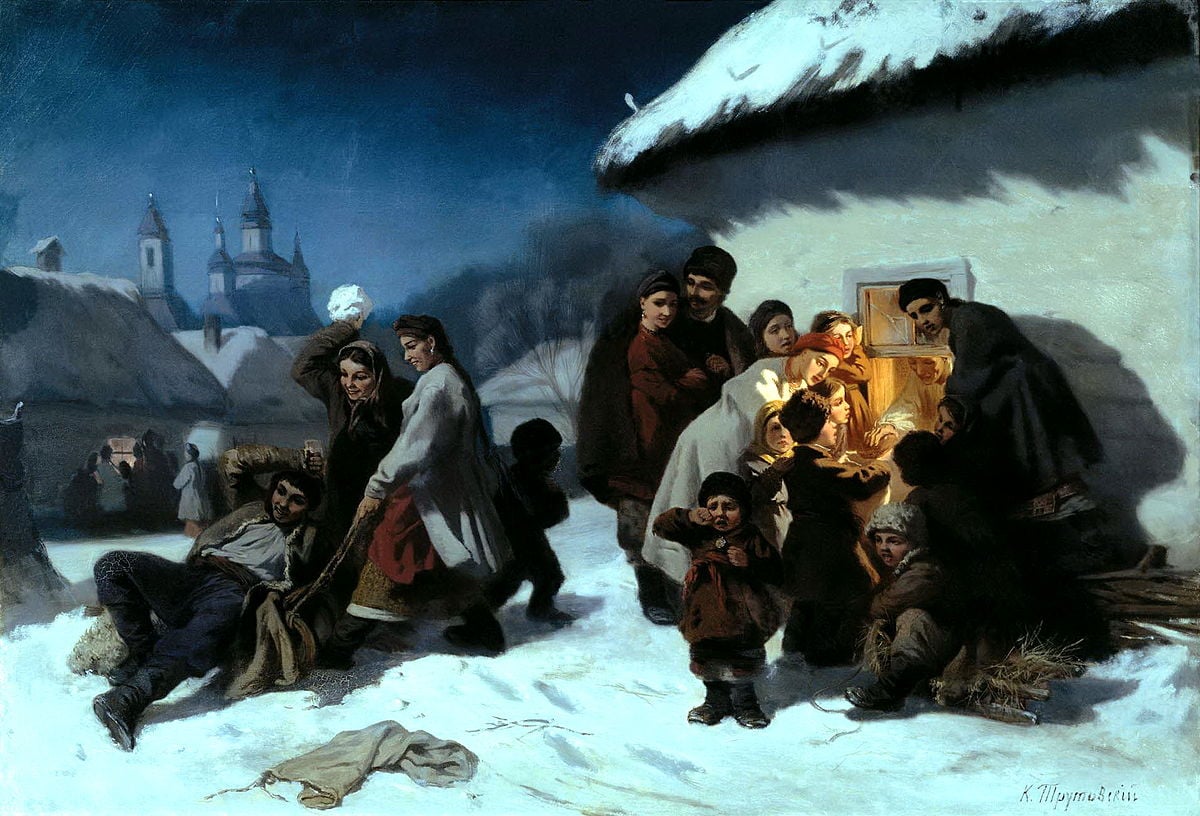
Ukrainian New Year traditions: Ukrainian artist Kostiantyn Trutovskyi's 1864 painting, Carols in Ukraine. Photo: WikiCommons
The sorcery of the Ukrainian New Year traditions continued into January 1, when Ukrainians celebrated the Day of Saint Basil (Vasyl in Ukrainian culture). The first enchanting thing people did on New Year's Day was burn the didukh, a traditional Christmas decoration, which we mentioned and explained its meaning and how to make it in our previous article, Celebrate Ukrainian Christmas: Three Fun Ideas to Try.
According to ancient tradition, merrymakers would gather at a crossroads in the morning after finishing the caroling and other rituals to burn this decoration. Then, they would jump over the fire to cleanse themselves from any contact with dark spirits, believed to roam at night during festivities.
Nowadays, Ukrainians usually burn the city didukh, which is often installed in the central square like a Christmas tree. The ritual of jumping over the fire isn't widespread on New Year's Day but can more often be seen in the summer during the Ivan Kupala — Ukrainian Midsummer.
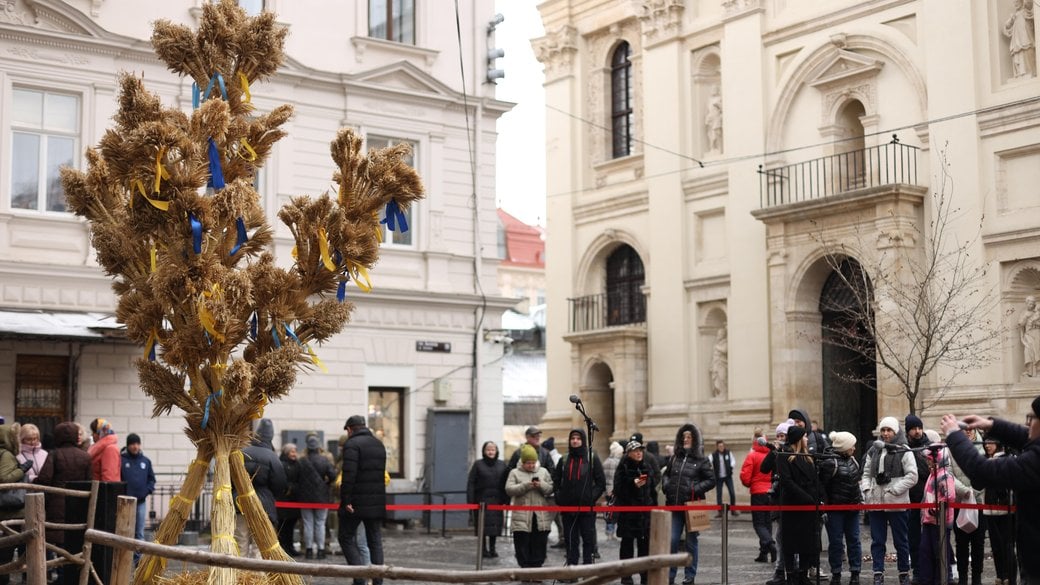
Ukrainian New Year traditions: Lviv called its city's didukh, which is almost four meters tall, on December 24, 2023. Photo: Anna Strohyi/Suspilne
And, as always, Ukrainians believed that however you spent the first day of the New Year, that's how the rest of your year would go. To make the new year even more bountiful, people in Ukraine performed another charming ritual called posivannia — a Ukrainian New Year tradition still practiced today.
At the break of dawn, people would set out to visit their godparents, relatives, and close friends with bags and pockets full of grain, such as wheat or rye, enter their homes, and start posivannia — scattering grains. Then, they would say, "I sow, I blow, I scatter grain, Happy New Year, I proclaim!" and begin singing special songs called zasivalky. Now, children often observe this cute tradition.



